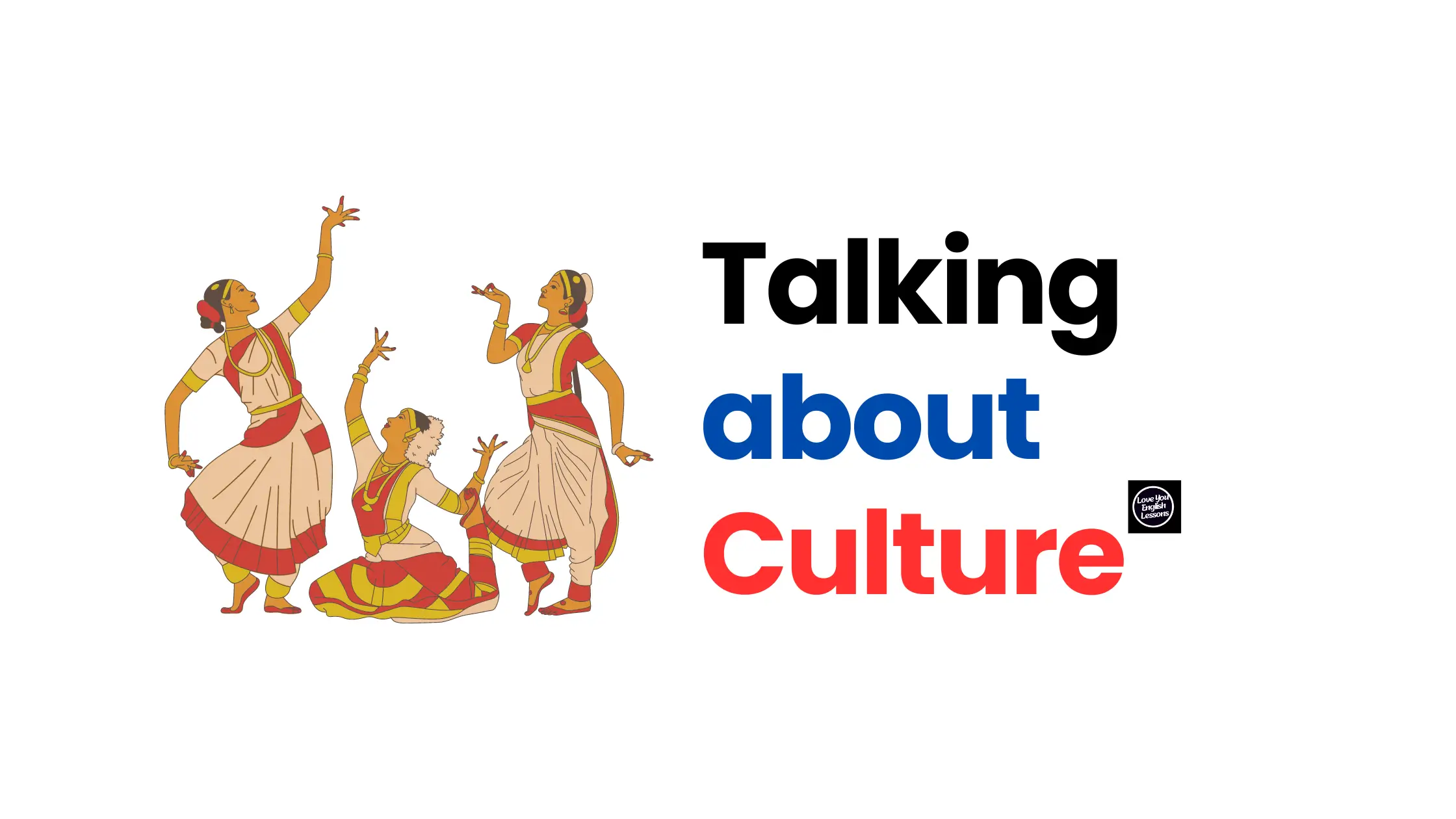How to Talk About Culture in English
Let’s talk about culture.
Talking about culture is a great way to connect with others, share ideas, and learn about different parts of the world.
I will teach you simple words and phrases to describe culture in English.
You can use these words to talk about your own culture or ask about someone else’s.
1. Words to Describe Culture
Here are some basic words that can help you describe culture:
Tradition: A practice or belief passed down over time.
Example: Wearing colorful clothes during festivals is a tradition in my country.
Custom: A common way of doing things in a group or society.
Example: Shaking hands is a common custom in many countries.
Heritage: The history, beliefs, and values of a group of people.
Example: We are proud of our cultural heritage.
Lifestyle: The way people live, including habits and daily activities.
Example: The lifestyle in big cities is very fast and busy.
Ritual: A ceremony or set of actions often connected to religion or tradition.
Example: Lighting candles is part of the wedding ritual.
Values: The important beliefs and principles of a society.
Example: Respect for elders is one of our core values.
Festivals: Special days to celebrate important events or traditions.
Example: Diwali and Christmas are two popular festivals.
Cuisine: The style of cooking and food from a culture.
Example: Italian cuisine is famous for pizza and pasta.
Art: Creative works like music, painting, or dance that reflect a culture.
Example: Classical dance is a beautiful part of our art.
Language: The way people communicate, including words, sounds, and writing.
Example: English is a global language spoken by many cultures.
2. Phrases to Talk About Your Culture
Use these phrases to share information about your own culture:
“In my culture, we…”
Example: In my culture, we celebrate New Year with family gatherings.
“It is common for us to…”
Example: It is common for us to greet guests with a cup of tea.
“Our traditions include…”
Example: Our traditions include dancing during weddings.
“One special thing about our culture is…”
Example: One special thing about our culture is the variety of food.
“We have a custom of…”
Example: We have a custom of sharing sweets during festivals.
“We believe in…”
Example: We believe in respecting nature and living in harmony.
3. Phrases to Ask About Someone Else’s Culture
You can also ask questions to learn about other cultures. Here are some simple phrases:
“Can you tell me about your culture?”
This is a polite way to show interest in someone’s culture.
“What are some traditions in your country?”
Example: What are some traditions in your country for New Year?
“How do people celebrate festivals in your culture?”
Example: How do people celebrate Christmas in your culture?
“What is the traditional food in your country?”
Example: What is the traditional food in your country during holidays?
“Are there any special customs I should know about?”
Example: Are there any special customs when meeting elders in your culture?
“What languages are spoken in your country?”
Example: What languages are spoken in your country besides English?
4. Simple Example Conversations
Here are two short conversations about culture:
Conversation 1: Sharing About Your Culture
A: Can you tell me about your culture?
B: Sure! In my culture, family is very important. We often eat meals together, especially during festivals.
A: That sounds wonderful! What is your traditional food?
B: Our traditional food includes rice, vegetables, and spices. We also love sweets during celebrations.
Conversation 2: Asking About Someone’s Culture
A: What are some traditions in your country?
B: One important tradition in my country is celebrating the New Year with fireworks and parties.
A: That’s interesting! Do you have any special customs for guests?
B: Yes, it’s common to offer tea or coffee when someone visits our home.
5. Tips to Talk About Culture
Here are some tips to help you talk about culture more confidently:
- Be curious and respectful: Show interest in other people’s traditions and lifestyles.
- Share personal stories: Talk about your own experiences to make the conversation more meaningful.
- Use simple words: Don’t worry about using difficult words. Simple language is clear and easy to understand.
- Ask questions: Asking questions helps you learn more about others and their cultures.
- Practice often: The more you practice, the easier it becomes to talk about culture in English.
Final Thoughts
Talking about culture in English is a great way to connect with others and share your unique background.
Use the words, phrases, and questions from this blog post to start conversations about culture.
Happy learning!







